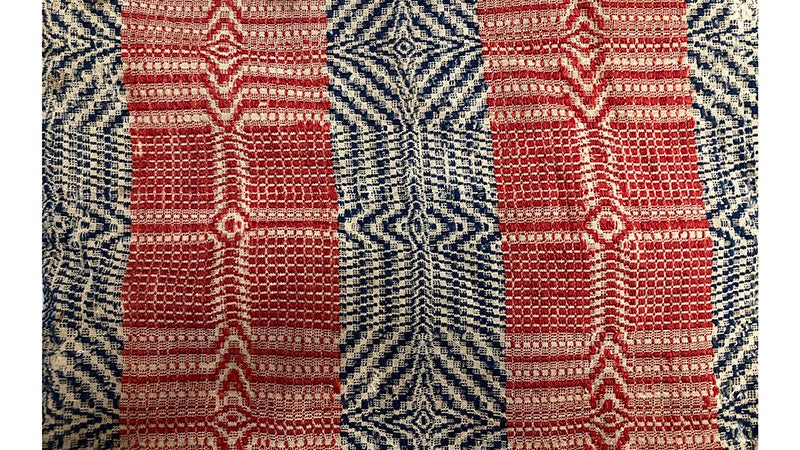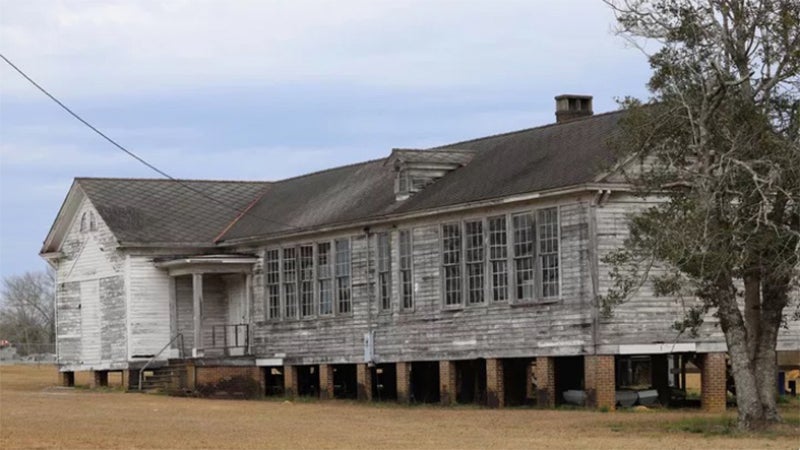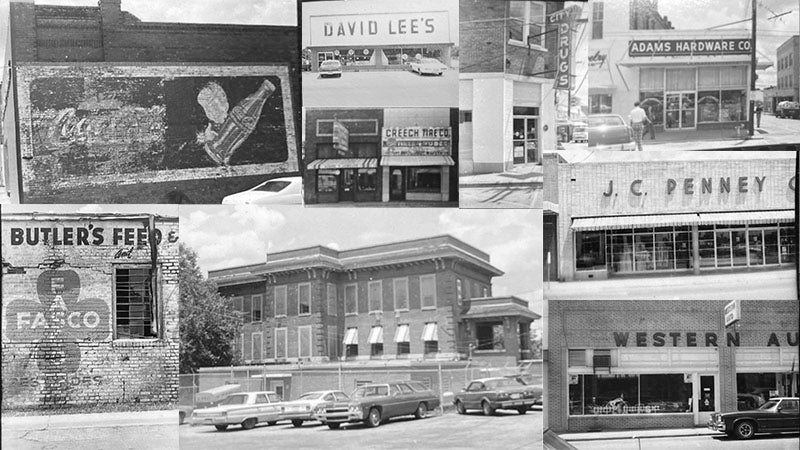Remember when: Tales from the tombs of Magnolia
Published 1:18 pm Saturday, August 27, 2016
“Where have all the flowers gone, long time passing? Where have all the flowers gone, long time ago? Where have all the flowers gone? Young girls picked them every one. When will they ever learn? When will they ever learn?”
“Where have all the young girls gone?…Gone to young men every one… Where have all the young men gone?…Gone for soldiers every one. Where have all the soldiers gone?…Gone to graveyards every one…Where have all the graveyards gone?…Gone to flowers every one. When will they ever learn?”
 This Peter, Paul and Mary folk song from the 1960s reminds me of the topic of today’s column. So many of us love our own Magnolia Cemetery, the oldest known cemetery in the city which entrance plaque indicates that it was opened in the mid-1850s shortly after the residents of the little river village of Montezuma moved up to hill in 1844 to establish Andalusia ( the new site).
This Peter, Paul and Mary folk song from the 1960s reminds me of the topic of today’s column. So many of us love our own Magnolia Cemetery, the oldest known cemetery in the city which entrance plaque indicates that it was opened in the mid-1850s shortly after the residents of the little river village of Montezuma moved up to hill in 1844 to establish Andalusia ( the new site).
My family remembers an occasion when we went to a football game in Tuscaloosa that I parted from them and opted to go to the old cemetery downtown for a lecture on Victorian tombstones. It was told that in the Victorian era, the living would visit the graves of their loved ones often times not only to bring floral bouquets but also for recreational picnics and Sunday afternoon outings. That is why we see concrete benches in these places of repose. There are some in Magnolia. There are also some vintage iron fences around some family plots. I can show you where one used to be but was sawed off at ground level and hauled off probably to be used somewhere else.
G. Sidney and Polly Wilder Waits refer to Magnolia Cemetery in their 1995 book indexing the entire cemetery they describe as “hallowed ground atop the Devereux (Hill).” The Waits refer to the 40-acre parcel (up the hill) that was acquired by the founding fathers for the original town Andalusia that designated the construction of a courthouse on that acreage. A public square or plaza was platted out as well and a space reserved for a community church which was built with a cemetery directly behind it.
The Waits wrote, “It is speckled with lovely old Southern Magnolia, Youpon, and Cedar trees.” The names of the cemetery streets are synonymous with the landscaping – Youpon Dr., Cedar Dr., and Magnolia Circle.
It is believed that the main entrance off Opp Avenue was marked with an iron archway resembling a cemetery archway that I saw once in an old John Wayne cowboy movie. This heavy iron archway most likely carefully shaped by a local blacksmith in the mid 1800s was discovered several years ago stored in an old downtown building and was donated to the Three Notch Museum, thanks to downtown developer John Tisdale, Jr. It reads, MAGNOLIA CEMETERY.
When the First Methodist Church, the wooden building, a scenic structure with stained glass windows, was located just a block west of the public square on Church Street, it is remembered by the generation now gone that at a funeral, the pall bearers would walk the casket over to Magnolia Cemetery which was just three blocks away. This 2011 poem speaks of that: THE ARCH OF MAGNOLIA “Enter, ye citizens, young and old, Now walk through this gate, silent yet bold. Dignity calls the living to honor, A father, a mother, a sister or brother. A friend or neighbor, a great public figure, Are doomed to lie down after the rigor. Frail infant and elder, pauper and mighty, Peace at last sharing grounds of the city. Voices silenced, Lives ended and blessed, Others left to carry on the rest. A quiet place of rest and repose, These chosen lots where a loved one goes. Heads pointed eastward waiting for that day, When heralds of trumpets are certain to play. A glorious awakening they shall behold, When the graves will be opened, it is often told. Dust and bones, Dirt and sod, Will swirl with the wind in a wink and a nod. The dead in Christ will then rise with glee, When face to face with the Master they see. To live in glory forever more, Meeting generations gone on before. So follow the pathway through the arch, Proceed through Magnolia, forward then march.”
From time to time, I ride through the historic Magnolia Cemetery where many early settlers and founding fathers of Andalusia are buried. The older part of the cemetery is where some graves are no longer recognizable due to erosion from the elements, decay from wooden markers that have long since disappeared, and vandalism. That is tragic.
Mr. Joseph Wingard, founder and charter president of the Covington Historical Society some 40 years ago, once wrote, “For someone to be forgotten by everybody – that seems the ultimate sadness to me.” Visitors who view the unique headstones and read the inscriptions and epitaphs might gain some understanding of the respect that was carefully thought out and properly given to the deceased and their final resting places.
The Waits noted in their book that, interestingly enough, it appears that more than one person may have been buried in at least a couple of graves. This is actually the custom in England and Scotland since burial land is scarce. In my travels to Great Britain, I remember seeing the headstone of a famous poet and his wife buried in the same grave, one on top of the other, seems like it was Wordsworth. (Mr. Wingard may dispute this since he probably has penned in his journal the correct Romantic poet!)
The Waits also observed during their tedious hours of indexing and mapping the sections that many graves are not marked. They wrote, “Tombstones and markers are of all shapes and sizes. Several graves are above ground in individual or group mausoleums. So much of our history is now in old Magnolia – horse traders, bankers, doctors, lawyers, veterans of all wars, and people from all other walks of life dot its surface. One could spend a lifetime observing the various monuments and reading the inscriptions…The earliest grave visible today dates 1855, but it is reasonable to assume that there are many graves much earlier.”
Much can be discovered when walking through the family plots. As one rides through the main street, the surnames of those on the tombstones spotted are exemplary of many of the street names of our fair city – Prestwood St., Stanley Ave., Dunson St., Faulkenberry St., Rankin St., Riley St., Tisdale St., O’Neal Ct., Opp Ave., Pelham St., Scherf Dr., Cawthon St., Barton St., Carson St., Doyle St., Brooks St., Adams Ave., Anderson Dr., Pugh St., Snowden Dr., McGowin St., Robinson Ave., Grider St., Powell Circle, Henderson St., Burnett St., Maddox Rd., Albritton Rd., Wilder St., Waits Dr., and Walker Ave.
The Waits’ book lists the names of Confederate Veterans buried in Magnolia along with the names of veterans of other wars. A marker memorializing young Navy Seaman Second Class Lee Otis Battle who disappeared on the USS Cyclops and presumed dead in the Atlantic in 1918 during World War I was placed in Magnolia. (The ship was steaming from Barbados to Baltimore. No wreckage was ever found. President Theodore Roosevelt said, “Only God and the sea know what happened to this ship.” The Red Level VFW named their post the Battle-Malcomb Post 3454 in honor of Otis Battle and James M. Malcomb, another Andalusia boy, First Lieutenant, Co. M, 167 Infantry, Rainbow Division, killed in action in 1918 in the Argonne Woods.)They were the first two Andalusia boys killed in WWI.
As one walks through the cemetery, there is evidence of a number of 1918 deaths as a result of the world wide influenza pandemic that struck Andalusia and 500 million people. Markers of the Masonic Order, the Daughters of the American Revolution, and Colonial Dames are placed on the graves of some who lie beneath the soil of Magnolia. There are several former mayors of Andalusia buried there including B. H. Lewis, Ed T. Albritton, Henry Opp, T. E. Henderson, Z. D. Studstill, J. W. Shreve, A. R. Powell, S. H. Gillis, J. Morgan Prestwood, J. F. Carson, and T. B. Wilder. A founding father, Josiah Jones, born in 1796 according to his tombstone and for whom the county was briefly named for only a couple of months, is buried in Magnolia. A Congressional Medal of Honor soldier, Ary Duke, is in the older part of Magnolia. The Waits point out that many financial pillars and judges in our town’s history are buried there. The Waits’ book can be found at the Andalusia Public Library. The couple was assisted to some degree with the indexing by Jenelle Wiggins Franklin, Bera Hudson Hall, Bill Howell, Jane Underwood Wiggins, and Curtis Thomasson.
Yes, perhaps we should host a walking tour through the cemetery for our young people where they just might gain some insight into the lives of those who came before who helped mold this town into what it is today – the buildings, the streets, the residences, the churches, the businesses, the traditions. We should never take that for granted. One town I heard of, Eufaula, I believe, has such an annual event on the edge of their cemetery called “Tales from the Tombs” which locals present at dusk on a moonlit night when citizens step out of the fog and impersonate characters from the past with their stories.
Let me share a poem once written in 1991 to call attention to the Andalusia landmark property and to promote beautification of the Magnolia Cemetery : REFLECTIONS ON MAGNOLIA CEMETERY “For all the lives that might have been, In awe I wonder now and then. A vast array of headstones mark. Those familiar faces so oft’ forgot. Who could have walked these streets and stood, In tasks others of us have now ensued. Whose silent tombs record their days, Before their terms were swept away. Who should have lived among us once, And shared a taste of life amidst, The year of stillness they portray, Of a peaceful presence they display. That point in time ahead we know, An age we all too soon will go. I wish to know the ones who sleep. For the mothers, the fathers, the children, I weep. Below the quiet spots so tragic, As in a dream, just as magic. Beyond this life for now I’ll wonder, Until God in His time selects my number. Then my sadness, my questions, my doubt, Will fade when revealed what ‘twas all about.”
And so, in conclusion, let me quote an epitaph from the grave of one who did much good in this life for the educational, church, social, and business community because of her love for Andalusia, the grave of Mary Elizabeth Bellingrath Burnett, 1862-1940 – “’Til the Day Break and the Shadows Flee Away,” I hope you readers will not neglect to REMEMBER WHEN.





